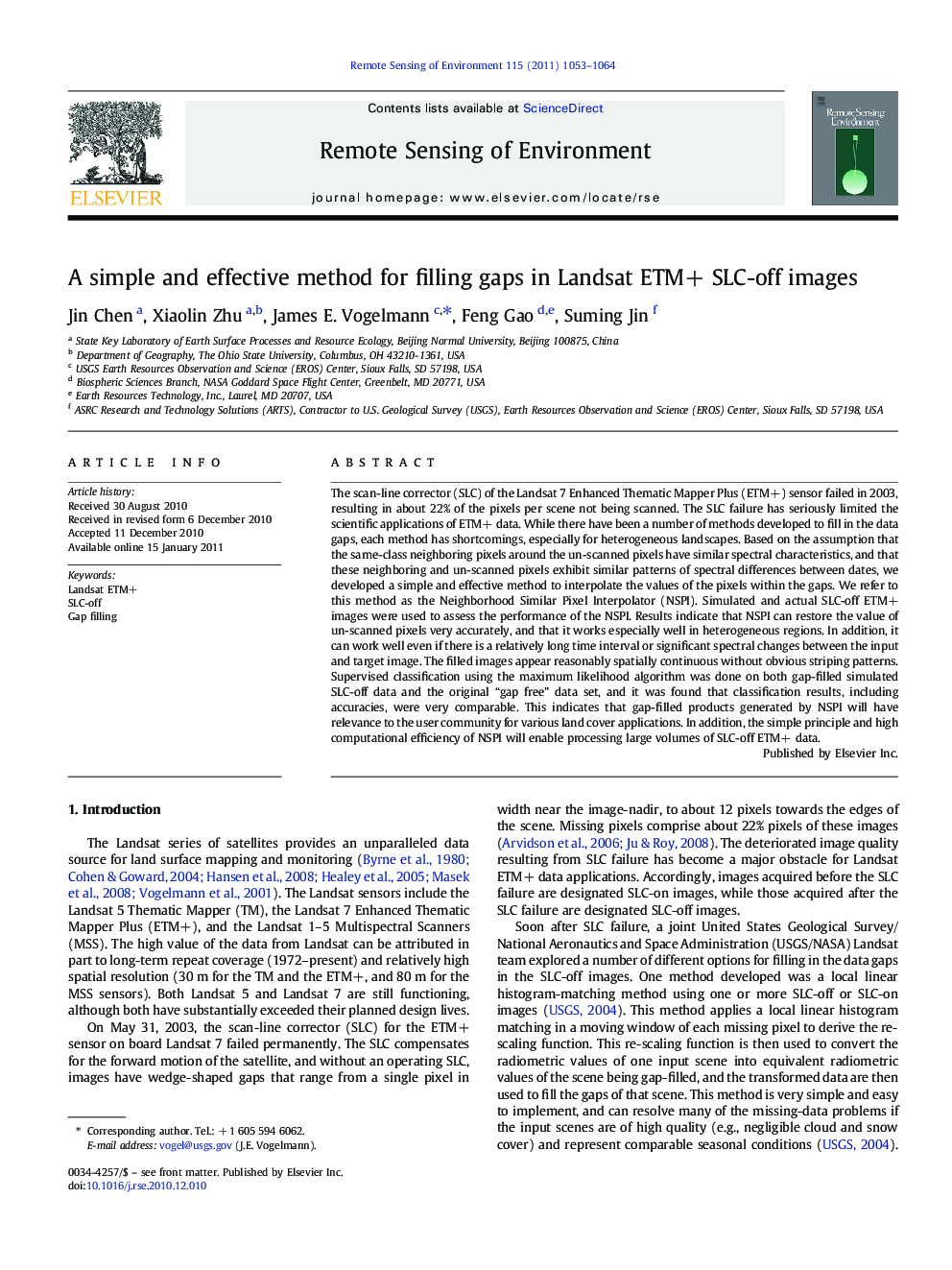| Article ID | Journal | Published Year | Pages | File Type |
|---|---|---|---|---|
| 4459565 | Remote Sensing of Environment | 2011 | 12 Pages |
The scan-line corrector (SLC) of the Landsat 7 Enhanced Thematic Mapper Plus (ETM+) sensor failed in 2003, resulting in about 22% of the pixels per scene not being scanned. The SLC failure has seriously limited the scientific applications of ETM+ data. While there have been a number of methods developed to fill in the data gaps, each method has shortcomings, especially for heterogeneous landscapes. Based on the assumption that the same-class neighboring pixels around the un-scanned pixels have similar spectral characteristics, and that these neighboring and un-scanned pixels exhibit similar patterns of spectral differences between dates, we developed a simple and effective method to interpolate the values of the pixels within the gaps. We refer to this method as the Neighborhood Similar Pixel Interpolator (NSPI). Simulated and actual SLC-off ETM+ images were used to assess the performance of the NSPI. Results indicate that NSPI can restore the value of un-scanned pixels very accurately, and that it works especially well in heterogeneous regions. In addition, it can work well even if there is a relatively long time interval or significant spectral changes between the input and target image. The filled images appear reasonably spatially continuous without obvious striping patterns. Supervised classification using the maximum likelihood algorithm was done on both gap-filled simulated SLC-off data and the original “gap free” data set, and it was found that classification results, including accuracies, were very comparable. This indicates that gap-filled products generated by NSPI will have relevance to the user community for various land cover applications. In addition, the simple principle and high computational efficiency of NSPI will enable processing large volumes of SLC-off ETM+ data.
Research Highlights► The scan-line corrector on Landsat 7 failed, resulting in pixels not being scanned. ► The NSPI algorithm was developed to estimate the values of missing pixels. ► NSPI uses same-class neighborhood pixels to approximate missing pixel values. ► NSPI works especially well in heterogeneous regions. ► The NSPI gap-filling algorithm is relevant to the applications community.
